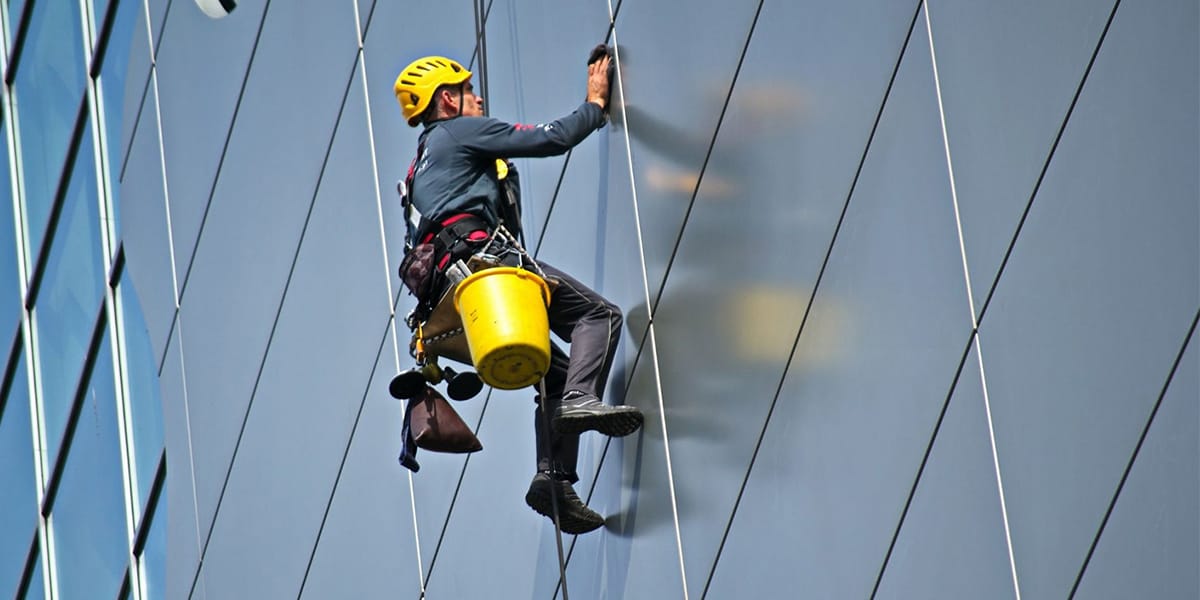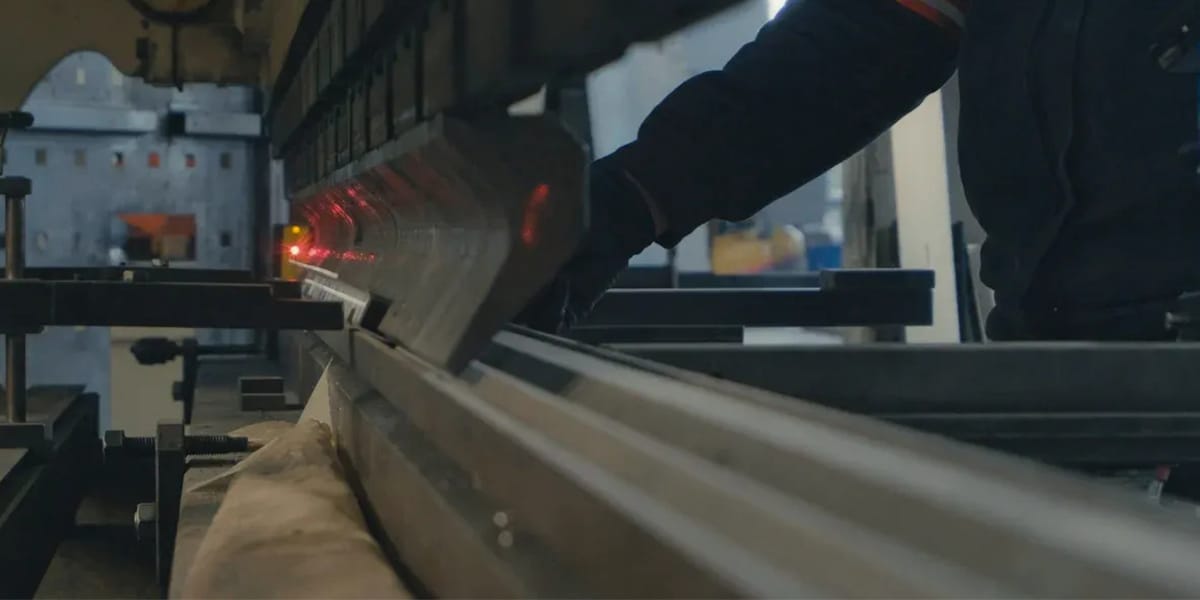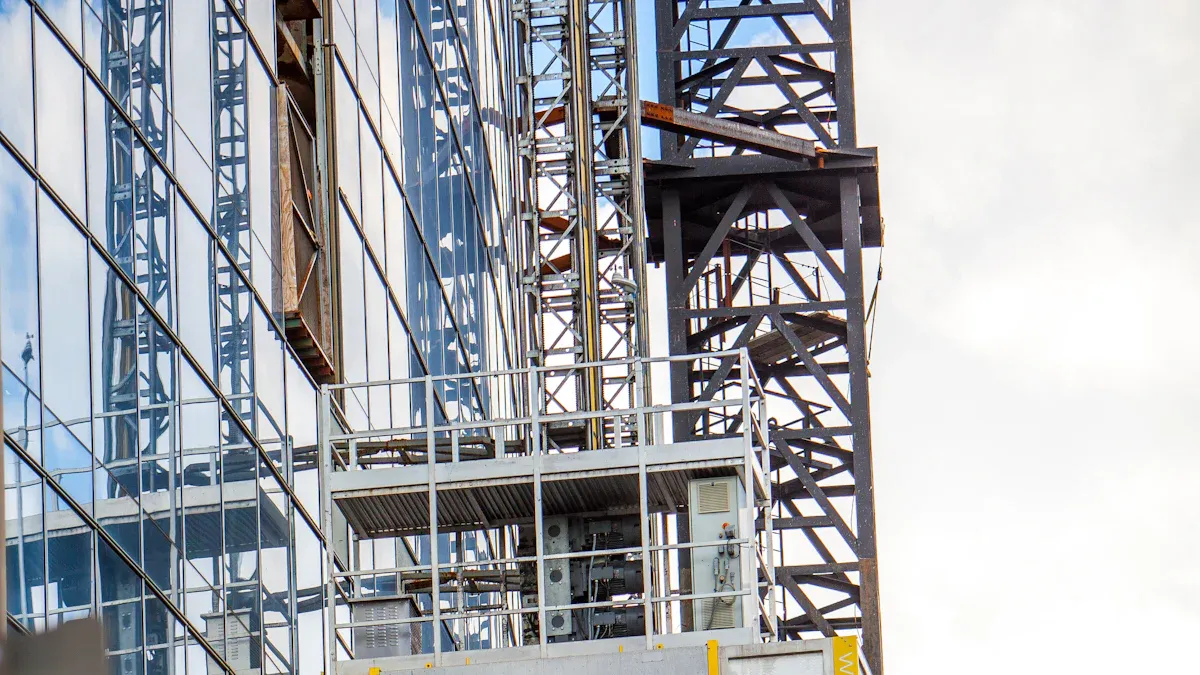
17 Aug How to Handle and Fix ACP Panel for Best Performance
Table of Contents
You should handle and fix each acp panel with care. This helps you get the best performance. Installing acp panels the right way protects your building. It keeps out bad weather, UV rays, and stains. When you use expert methods to install acp, the panels last longer. They also keep their color for more time. The cladding stays strong and safe for many years. If you get a professional to install acp, you need less maintenance. Your building will look new for longer. Pick good quality acp and use the right fixing systems. This helps your building stand up to impacts, rust, and tough weather. Always follow expert advice to choose the best acp for your project.
Key Takeaways
Clean and make the surface flat so panels stick well and last longer.
Use the correct tools and safety gear to cut and fix ACP panels the right way.
Leave space for panel movement during installation to stop bending or damage from temperature changes.
Seal all joints well with good sealants to keep water and air out and protect the building.
Check and clean panels often to fix small problems early and keep the cladding looking new.
ACP Panel Installation
Preparation
Start every acp panel installation by getting the surface ready. Clean the area to take away dirt, grease, and trash. This helps the panels stick better and last longer. Look at the surface for cracks or other problems. Fix any damage so the base is smooth for acp sheet installation. Use a leveller to check if the surface is flat. If the surface is not even, the cladding may not fit right. Always use measuring tapes to make sure everything lines up. Let your acp sheets get used to the room before you start. This stops them from bending or changing shape later.
Tip: A clean, flat, and dry surface helps your aluminium composite panel installation stay strong and last long.
Materials and Tools
Get all your tools and materials before you begin acp installation. You need measuring tools like tape measures, pencils, and chalk lines for good measurement. Use cutting tools like a circular saw with a fine-tooth blade, jigsaw, or tin snips to cut acp sheets neatly. Fastening tools are screwdrivers, drills, and sometimes a nail gun. For surface prep, use sandpaper, cleaning cloths, and solvents. Always wear safety goggles, gloves, and ear protection to stay safe. You also need substructure materials like metal or wooden frames, support profiles, fasteners, adhesives, and sealants. The right tools and materials help you work faster and make your acp cladding installation better.
Panel Layout
Plan where your aluminium composite panels will go before you start. Use drawings and guides to decide each panel’s spot. Good measuring and marking keep the panels straight and the cladding even. Make sure all cuts and joints are neat. Attach the panels with approved fasteners or adhesives, and follow the manufacturer’s rules for spacing. Seal all joints and edges well to keep out water and air. Check the alignment and spacing as you work to keep things tidy. A good panel layout makes your acp cladding installation look nice and last longer.
Entire Installation Process
Mechanical Fixing
Mechanical fixing is a common way to attach aluminium composite panels. You use screws, rivets, or clips to hold the panels on a frame. This method works well for short buildings and places that need strong support.
Here are the steps for using mechanical fixing:
Substrate Preparation
Clean the surface well. Make sure it is dry and strong. If needed, make the area stronger. Add a frame to make the base flat for the acp sheets.Framing and Substructure Installation
Put up metal studs or aluminum bars in a straight line. Space them based on the panel size and what the maker says. Check that everything is straight and tight. Add joints and spots for brackets or glue.Panel Fabrication and Cutting
Measure the wall and mark where each panel goes. Cut the panels with the right tools. Make holes if needed and label each panel.Panel Attachment Using Mechanical Fasteners
Place the acp sheets on the frame. Line them up. Use rivets, screws, or clips to fix each panel. Keep space between fasteners and leave small gaps for movement.Sealing and Weatherproofing
Put sealant or gaskets on the edges and joints. Add flashing and vents for water and air flow. Smooth the sealant for a tight finish.Finishing Touches
Look for gaps or problems. Clean the panels with safe cleaners. Fix any marks or scratches with paint or sealant.Maintenance and Inspection
Plan to clean and check the panels often. Follow the maker’s care guide. Keep notes about your work for later.
Tip: Always leave space for the panels to move. Use slotted holes and gaps at the joints. This stops the panels from bending or warping.
You can also use special ways like the Rout and Return method. In this way, you cut a groove near the edge of the panel. Fold the edge to make a tray shape. Attach it with clip angles. This helps the panel handle wind and lets it move. When using rivets, make the hole a bit bigger than the rivet. This lets the panel expand and shrink.
Here is a table that shows different ways to attach aluminum composite panels:
Installation Method | Description | Advantages | Disadvantages / Limitations |
|---|---|---|---|
Mechanical Fixing | Attaching ACP panels to substructure using screws or rivets. | Simple installation; suitable for low-rise buildings; depends on panel thickness and sturdy substructure. | Not ideal for high-rise buildings; limited by substructure strength and panel thickness. |
Structural Adhesive | Bonding ACP panels to substructure with adhesive. | Better for high-rise buildings; accommodates wind loads and thermal expansion. | Requires clean, dry surfaces; curing time needed; more precise application. |
Hanging System | Suspending ACP panels from substructure with aluminum brackets or profiles. | Suitable for irregular or curved surfaces; allows leveling and alignment. | More complex installation; requires grid substructure and sealing joints. |
Adhesive Fixing
Adhesive fixing is another good way to install aluminium composite panels. You use strong glue instead of screws or rivets. This way works well for tall buildings and places where you want a smooth look.
Some of the best glues for acp sheet installation are special films made from ethylene-crylic acid copolymer. These glues stick well to both the aluminum and the core. They can stand up to weather, heat, and fire, depending on the core type. Many panels, like ALUSIGN®, use a two-layer glue film. One side sticks to the aluminum, and the other side sticks to the core.
When you use adhesive fixing, follow these steps:
Clean the surface well. Make sure it is dry and has no dust or grease.
Cut the glue film or spread the glue on the back of the panel.
Press the panel onto the frame. Hold it until the glue sets.
Use protective films with rubber glue to keep the panels safe while you work. These films peel off easily and do not leave much behind.
Check the panel’s position and spacing as you go.
Note: Adhesive fixing needs careful cleaning and time for the glue to dry. Do not hurry this step. Always follow the maker’s instructions for the best results.
Cutting and Fabrication
Cutting and shaping the panels is an important part of the whole installation. You need the right tools and steps to avoid hurting the acp sheets.
Here are some tips for cutting and shaping the panels:
Use saw blades with carbide tips, 80-100 teeth, and 255mm size. Run the saw at 2,000-4,000 rpm and move the panel at 10-30 meters per minute.
Always cut with the finished side facing up. This stops scratches or peeling.
Keep your saw blades sharp. Change them if they get dull to avoid rough edges.
For shear cutting, set the gap and angle based on the panel’s thickness.
Remove any rough spots after cutting. Use a hammer, plane, or sandpaper for smooth edges.
Use rulers or templates for straight and even cuts.
For folding, use a router or circular cutter to make a groove. Fold the panel on a flat surface. Keep a small curve at the corners to stop cracks.
Only fold panels when it is warmer than 10°C. This keeps the coating from cracking.
Clean the panels before and after cutting with rubbing alcohol or soap.
Wear safety glasses, gloves, and a dust mask while working.
You can use jigsaws, circular saws, shearing machines, or CNC routers for special shapes. For drilling, use high-speed steel bits for a clean hole. If you are not sure about cutting the panels, ask a pro for help.
Tip: Always hold the panels tight before cutting. This helps you cut straight and keeps you safe.
By following these steps for mounting, attaching, and cutting the panels, you can finish the whole installation with confidence. You will get a strong, neat, and long-lasting finish for your aluminium composite panel project.
 Install ACP Sheet Joints and Sealing
Install ACP Sheet Joints and Sealing
Joint Types
When you put in acp sheet, you must pick the right joint type. Each joint type helps your cladding deal with movement and weather. The table below lists common joint types, how to use them, and where they work best:
Joint Type | Installation Technique | Applications / Use Cases |
|---|---|---|
Wet Sealant Joint | ACP sheets fixed on sub-structure; sealing material applied to joints | Ensures water tightness; used in new buildings and renovation projects |
Hanging Method | Panels hung from sub-frame, not tightly fastened | Allows expansion and contraction; simple and time-saving installation |
Dry Gasket Joint | Gaskets used instead of sealants | Avoids staining and dirt on panel surfaces; gaskets are durable |
Narrow Open Joint | Used for stone and timber patterned panels with narrow joints | Provides aesthetic look; EPDM gaskets or sealants used depending on requirement |
Internal ACP Work | Hanging method for internal wall cladding; Z-flange for interior columns; ceiling panels with non-penetrating rivets | Specific methods for interior applications |
You need to let your acp cladding move when it gets hot or cold. If you do not, the panels can bend or look wavy. This can make the cladding weak and let water get inside. Always choose a joint type that lets the panels move safely.
Tip: A good joint design keeps your acp cladding strong and looking nice for a long time.
Sealing Methods
Sealing the joints is important to keep water out of your cladding. You should use the best ways to protect your building. Here are the top ways to seal acp joints:
Use waterproof adhesives or sealants to fill all spaces between panels.
Put edge sealing with varnish or tape to stop water from reaching the core.
Work slowly and carefully to keep joints tight and safe.
Check sealants and joints often. Change them if you see any damage.
Pick panels with strong coatings like PVDF for better waterproofing.
For the best results, use sealants made for acp cladding. Neutral cure silicone and acetoxy silicone sealants work well. These sealants stay soft, handle weather, and stick to many surfaces. Some, like SilPruf™ SCS6000, can stretch and shrink as the panels move. They also block UV rays, rain, and snow.
🛠️ Note: Always follow the manufacturer’s guide when using sealants. This helps your cladding last longer and keeps your building safe.
Finishing and Maintenance
Final Checks
You should always finish your ACP panel installation with careful checks. Start at a corner or where two areas meet. Use a spirit level and tape measure to make sure each panel sits straight both vertically and horizontally. Attach panels loosely at first. This lets you adjust their position for perfect alignment. Use stainless steel or aluminum fasteners. Space them evenly and keep them a safe distance from the panel edges. Do not overtighten the fasteners. This prevents bending or damage.
Follow these steps for a strong and neat finish:
Check straightness with a spirit level and tape measure.
Attach panels loosely, then adjust as needed.
Tighten fasteners evenly, but not too much.
Use spacers or shims to keep even gaps for expansion.
Seal all joints with high-quality silicone or polyurethane sealant.
Smooth the sealant for a clean look.
Remove the protective film only after you finish all checks.
Inspect corners and edges for straightness.
Document your work with photos for future reference.
Tip: Always check the subframe and supports to make sure they are secure and spaced correctly.
Cleaning
Regular cleaning keeps your ACP panels looking new and working well. Use mild detergents or neutral pH cleaning solutions mixed with water. Clean the surface gently with a soft cloth or sponge. Always start at the top and work down. Avoid harsh chemicals like caustic soda or strong acids. These can damage the paint and cause corrosion.
Rinse the panels with clean water before and after using any cleaning agent.
Dry the surface with a soft, non-abrasive cloth to prevent water spots.
Do not clean panels in direct sunlight or at high temperatures.
You can use diluted ammonia-based or citrus-based cleaners for tough stains. Always test any cleaner on a small area first.
Routine Care
You should inspect your ACP panels often for dents, scratches, or loose fasteners. Fix small damages quickly with touch-up paint or by replacing panels. Make sure all joints and seals stay tight to keep out water and dust. Clean your panels more often if your building faces dust, pollution, or harsh weather.
Here is a table of common issues and how to prevent them:
Problem | Prevention and Maintenance |
|---|---|
Dents and Scratches | Use protective coatings; repair quickly with touch-up paint |
Heat Expansion | Allow space for thermal movement during installation |
Bonding Problems | Use proper adhesives and surface treatments |
Sealant Stains | Remove protective film 40-45 days after sealing |
Cleaning | Use mild soap and soft cloth; avoid harsh chemicals |
🛠️ Note: Regular care and gentle cleaning help your ACP panels last longer and keep your building looking its best.
Troubleshooting Install Aluminum Composite Panels
 Common Issues
Common Issues
When you put in aluminum composite panels, you might have some problems. Knowing about these problems helps you avoid mistakes. It also keeps your project safe and strong. Here are some common problems you might see:
Discoloration can happen if you use indoor panels outside or pick the wrong sheet.
Bad base sheets can make the panels break early.
Rust or weak frames can make the panels loose or unsafe. Always use rust-proof materials like aluminum profiles for the frame.
Fake or bad products often cause the installation to fail.
Changes in temperature can make panels bend or loosen fasteners if you do not leave space for movement.
Wind can hurt panels if you do not check the strength needed for your building.
Water leaks can happen if you skip waterproofing or use bad sealants.
Moisture can get inside and make your panels last less time if you do not build a weather-resistant barrier.
🛠️ Tip: Always check the weather, building height, and panel type before you start to install aluminum composite panels.
Solutions
You can fix most installation problems by following good steps and using the right materials. Here are some ways to help you get the best results:
Check your panels and frame before you start. Look for damage, rust, or other problems.
Use good sealants. Pick hourglass-shaped sealants and backer rods that fit the joint size. Put on sealant at normal temperatures to handle movement from heat or cold.
Pick dry gasket joints for a neat finish. Make sure gaskets are cut well and put between panels with no extra stuff.
Leave space for panels to move. Use the hanging method with 10-15 mm gaps filled with silicone.
Take off protective films as soon as the panels arrive. This stops glue marks and keeps the surface clean.
Always put panels in the direction shown by arrows on the film. This keeps the color and finish the same.
Build a weather-resistant barrier and use a good primer to stop water leaks.
Cut, drill, or roll panels from the back to keep the front safe.
After you put in aluminum composite panels, check for water and air leaks. Fix any loose fasteners or bad sealants right away.
Keep a record of all repairs and checks. This helps you see problems and do better next time.
Problem | Solution |
|---|---|
Discoloration | Use correct panel type for location |
Rusty frame | Use rust-proof aluminum profiles |
Water leaks | Apply quality sealants and weather barriers |
Loose panels | Check fastener strength and spacing |
Surface damage | Cut and drill from the back |
🔍 Note: Careful checks, good planning, and using the right materials help you avoid most problems and keep your panels looking great for years.
You can achieve the best results with ACP panels by following a few key steps. Start with careful measurement and layout. Use the right tools for cutting and always fasten panels securely. Seal all joints to keep out moisture. Inspect your work and make adjustments for a smooth finish. Regular cleaning and quick repairs help panels last longer.
Using a checklist for each project helps you avoid mistakes and ensures every step gets done. When you follow these tips, your panels will look great and protect your building for years.
FAQ
How do you store ACP panels before installation?
You should keep ACP panels flat on a dry, level surface. Store them indoors away from sunlight and moisture. Place spacers between panels to prevent scratches. Avoid stacking heavy items on top.
Can you cut ACP panels with regular tools?
You can cut ACP panels with common tools like a circular saw or jigsaw. Use a fine-tooth blade for smooth edges. Always wear safety gear. Test on a scrap piece first.
What is the best way to clean ACP panels?
Use a soft cloth with mild soap and water. Rinse with clean water and dry with a soft towel. Avoid harsh chemicals or abrasive pads. Clean panels regularly to keep them looking new.
Why do ACP panels need expansion gaps?
ACP panels expand and contract with temperature changes. Expansion gaps let the panels move without bending or warping. You should always follow the manufacturer’s guidelines for gap size.
How often should you inspect ACP panels?
Inspect ACP panels at least twice a year. Look for loose fasteners, damaged seals, or surface stains. Fix any problems quickly to keep your panels strong and attractive.



 Install ACP Sheet Joints and Sealing
Install ACP Sheet Joints and Sealing Common Issues
Common Issues